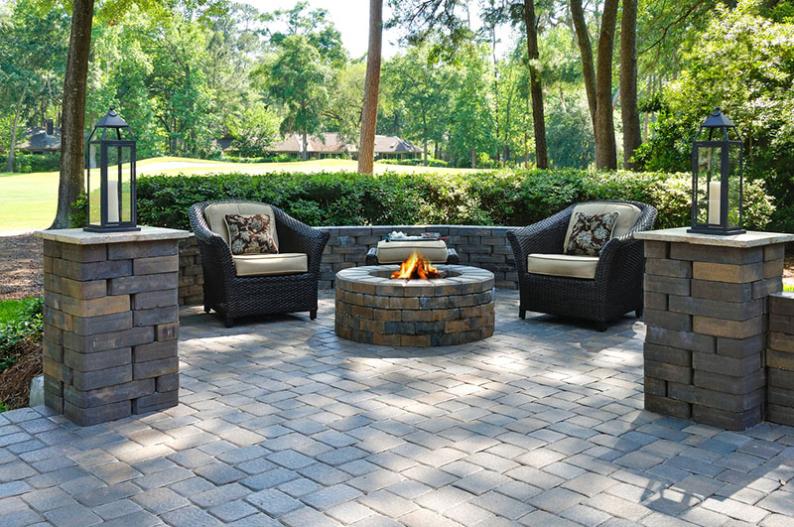
For over 5,000 years, interlocking paving stones have been the choice of previous generations for consistent and reliable performance on the streets of Europe and North America. Around 3,000 B.C., the very first roads were made from segmental paving units by the Romans, and over two thousand years ago, tightly placed cut stones covering a compacted aggregate base were used to create revolutionary roadway solutions. Today, those same roads are still in use with the original paving stones!
This simple yet economical, durable, and almost maintenance-free system became standard as one of the most versatile old-world paving solutions and has now been reintroduced and reinvented over the last 35 years with much technological advancement. One of the biggest advantages of choosing concrete pavers is that if a repair ever does become necessary, a stained or damaged paver can be easily replaced by removing and reinstalling new pavers, unlike other surfacing solutions.
Today, the use of interlocking pavers has demonstrated exponential growth because they are a superior surfacing system for our climate, which are very affordable and easy to maintain, demonstrating superior lifelong value to today’s homeowners looking to expand their outdoor living space to spend time with family and friends.
Current pavers are manufactured using concrete to exact standards, provide long-term durability and many are backed by lifetime warranties. Concrete pavers have become the industry standard, originating in Europe after World War II as a replacement for clay brick streets. Billions of square feet have now been installed annually throughout the world, and it’s very interesting that an old-world solution can become one of the preferred solutions for modern living.
Paving stones for our environment are typically made from concrete. Although other materials exist, this method is best suited to our climate, and many breakthroughs have occurred that provide environmental or “green” surfacing solutions with the use of pavers.
Manufacturers recommend setting stones in approximately one inch of sand with a compacted granular base of at least 6 to 12 inches (more base may be required depending on the soil make-up of your residence). The layer of sand helps to keep water away from the pavers and to effortlessly provide more efficient drainage which will help to prevent wear tracks, erosion or damage from freeze/thaw cycles. To fill in the gaps, polymeric jointing sand is also recommended, which prevents weed growth or ant populations, which are now problems of the past thanks to this new technology. As well, edge restraints such as SnapEdge are now the norm to prevent any lateral movement with your project. You can also repair older interlocking driveways, walkways or patios very easily and economically with the introduction of these new advancements.
The fact that pavers are strong and flexible, making them resistant to cracking, and come in many popular profiles and colours helps many designers, contractors and homeowners alike to create beautiful landscape designs for patios, driveways or walkways. Many homeowners have extended their indoor living space to the outdoors by adding backyard kitchens, fireplaces and gathering areas to complement existing patios and pools. Your backyard oasis eliminates the two-hour drive to the cottage or the additional maintenance responsibilities that a recreational property may require. All the while adding value to your property with limited maintenance and complementing the architectural style of your home so you can enjoy every day!
The advantages of paving stones are many and it helps to familiarize yourself with all surfacing or wall-building options. Our local experts can help to evaluate your current plans and goals to ensure recommendations and solutions that you’ll enjoy for years to come. As well, they can provide referrals to preferred, experienced and reliable contractors within your specific area who use trusted industry and manufacturer-recommended installation techniques.
